These 12 Companion Plants Will Make Boxwoods The Star Of Your Garden
Boxwoods are already garden royalty, but with the right sidekicks, they totally steal the show. I’ve mixed and matched all sorts of plants over the years, and some combos just click.
Think texture, color, and a little wow-factor that makes everything pop. These companion plants don’t just sit pretty—they make boxwoods look like they belong on a garden magazine cover.
Let me show you the ones that actually work (and made mine look amazing).
1. Lavender
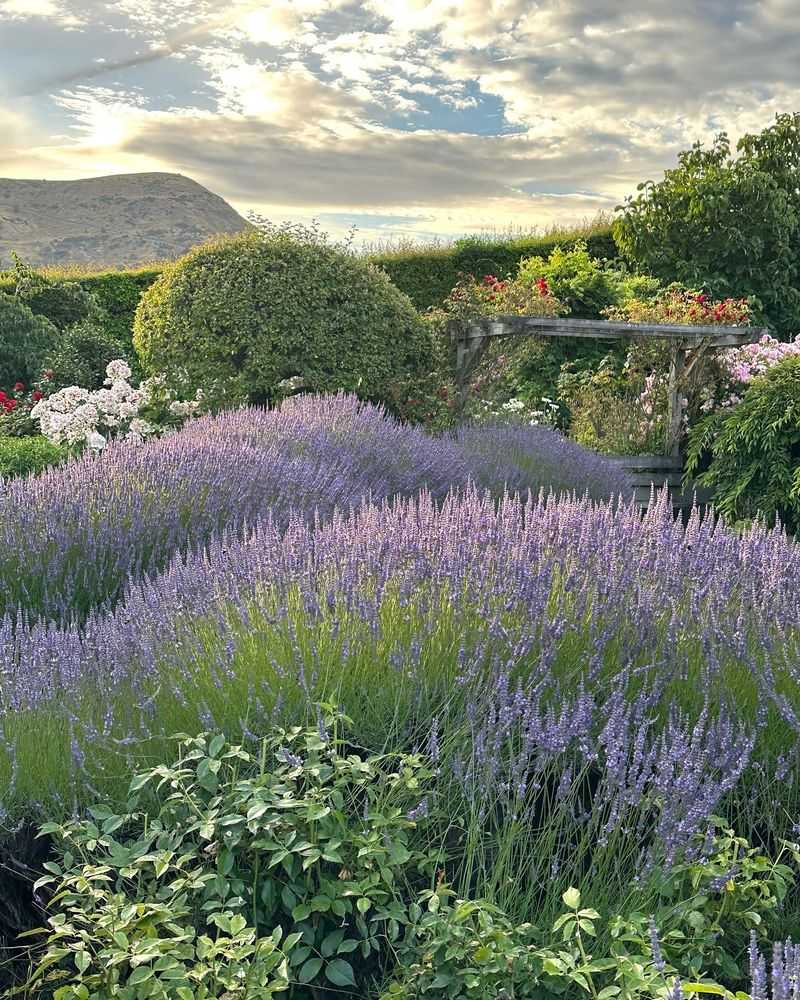
Nothing says ‘garden classic’ quite like the purple spikes of lavender nestled against deep green boxwood hedges. The contrast between lavender’s soft, flowing form and boxwood’s structured shape creates a stunning visual balance.
Bees and butterflies flock to the fragrant blooms while the silvery foliage brightens up dark green boxwood backgrounds. As a bonus, both plants prefer similar well-drained soil conditions, making them practical partners in garden design.
2. Russian Sage
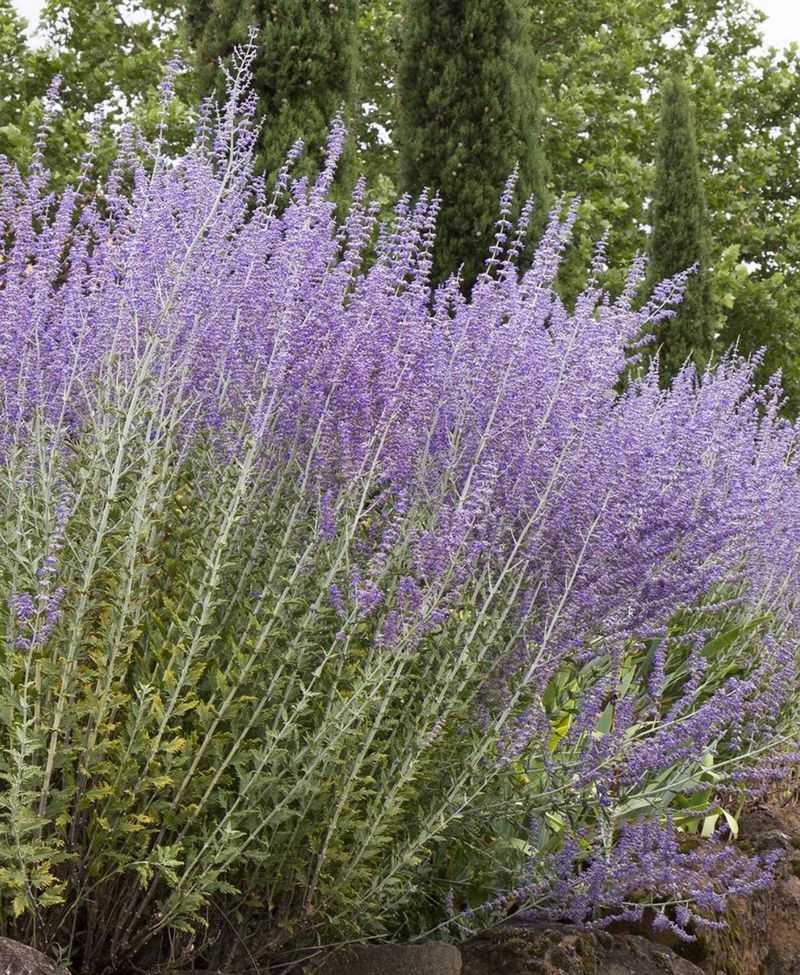
Airy and ethereal, Russian sage creates a dreamy backdrop when planted behind boxwoods. Its cloud-like purple-blue flowers seem to float above the garden from midsummer through fall, adding movement where boxwoods provide stability.
The silver-gray foliage offers beautiful contrast against dark green boxwood leaves. Drought-tolerant and deer-resistant, this perennial requires almost no maintenance while providing months of color that makes boxwoods pop.
3. Coral Bells
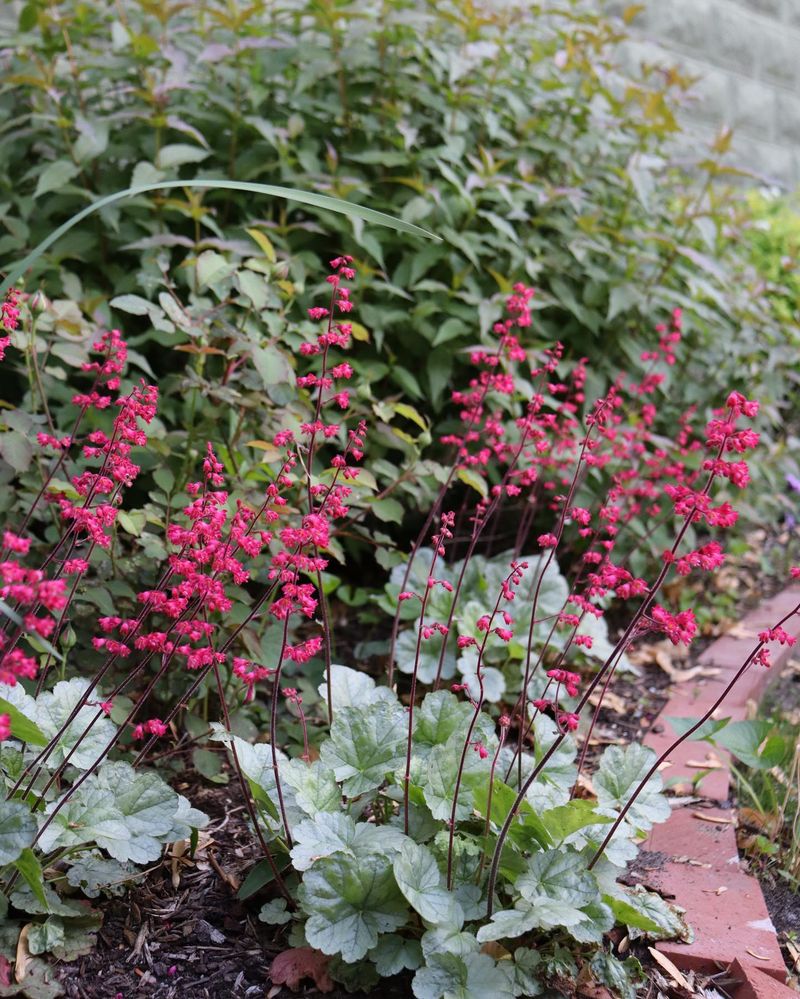
Want to add a splash of color at boxwood’s feet? Coral bells offer foliage in stunning shades from caramel to purple to lime green. Their low, mounding habit creates a perfect transition between boxwoods and walkways or lawn areas.
Small bell-shaped flowers dance above the colorful leaves on delicate stems, adding another layer of interest. These shade-tolerant perennials thrive in the dappled light often found near boxwoods, creating a maintenance-free pairing that looks intentional and polished.
4. Roses
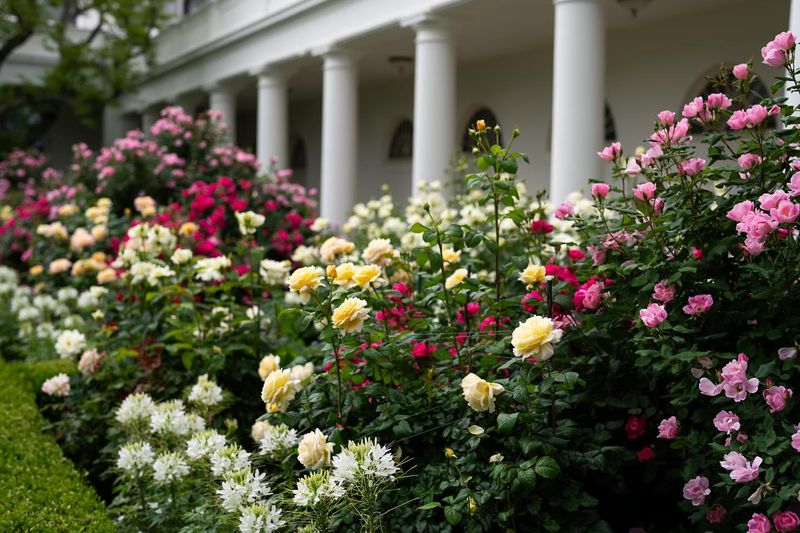
Classic garden romance comes alive when roses and boxwoods join forces. The structured formality of boxwoods provides the perfect backdrop for roses’ exuberant blooms and casual growth habit. Try David Austin varieties for that cottage garden feel with modern disease resistance.
Boxwoods serve as living dividers between rose varieties and help hide their often leggy lower stems. For maximum impact, choose roses in warm colors like apricot or pink that will stand out dramatically against the cool green of boxwood foliage.
5. Ornamental Grasses

Movement and sound enter the garden when ornamental grasses partner with steadfast boxwoods. The contrast couldn’t be more perfect – rigid, evergreen structure meets flowing, seasonal texture. Try compact varieties like Japanese Forest Grass for smaller spaces.
Golden grasses particularly shine against dark green boxwood foliage in late summer and fall. As an added bonus, many ornamental grasses require similar low-water conditions once established, making this pairing both beautiful and practical for busy gardeners.
6. Allium

Spring gardens burst with excitement when globe-shaped allium flowers emerge among boxwood plantings. These perfectly round purple blooms appear on tall stems, creating a lollipop effect that contrasts beautifully with boxwood’s horizontal lines and dense form.
Plant bulbs in fall for a maintenance-free spring display. Even after blooming ends, the architectural seedheads continue providing interest throughout summer. Their vertical growth takes up minimal ground space, making alliums perfect for tucking between established boxwoods.
7. Tulips

Early spring magic happens when tulips emerge from the base of boxwood plantings. After winter’s monotony, these colorful blooms signal new beginnings while boxwoods maintain the garden’s structure. Choose single colors for formal settings or mix varieties for cottage garden charm.
Red tulips against dark green boxwood creates a holiday-worthy color scheme. Since tulips go dormant after blooming, the evergreen boxwoods hide their fading foliage while maintaining visual interest throughout the growing season – the perfect partnership for seasonal beauty.
8. Hostas
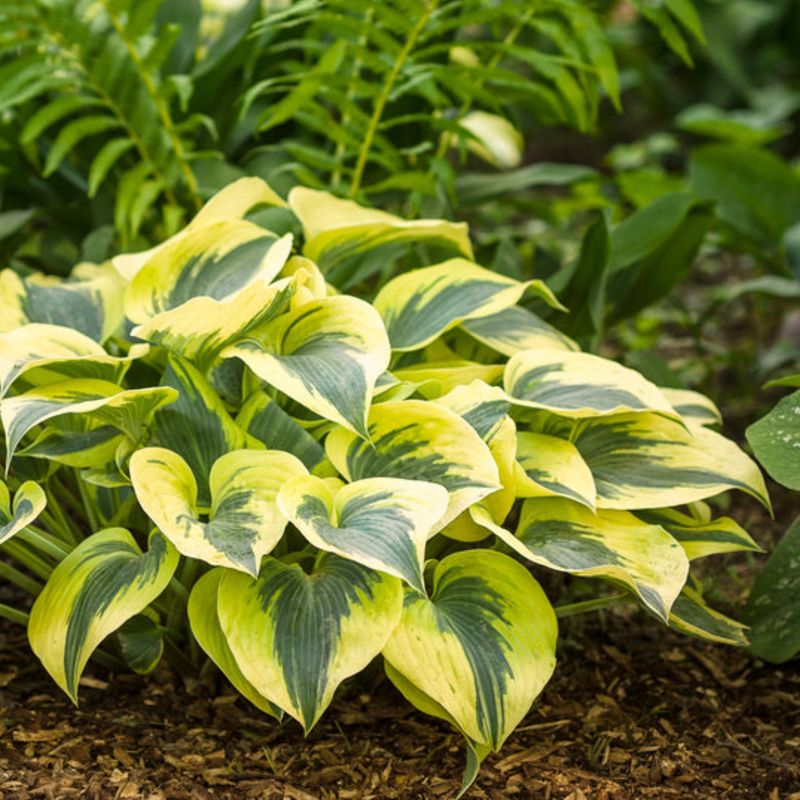
Shade-loving hostas create a lush groundcover beneath boxwoods in darker corners of the garden. Their broad, often variegated leaves offer textural contrast to boxwood’s small, dense foliage. Blue-hued varieties particularly complement the deep green of traditional boxwoods.
Minimal maintenance requirements make this combination perfect for busy gardeners. Both plants thrive with similar soil conditions and moderate watering schedules. For maximum impact, choose larger hosta varieties that create bold sweeps of foliage beneath the more restrained boxwood forms.
9. Hydrangeas
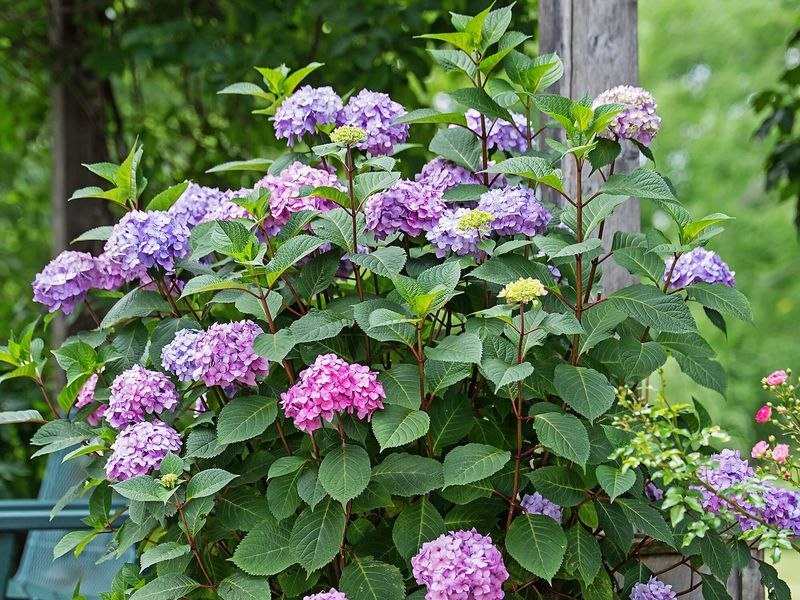
Garden drama unfolds when hydrangeas’ massive blooms appear alongside structured boxwoods. The pairing creates a beautiful study in contrasts – boxwood’s permanence against hydrangea’s seasonal transformation. For continuous interest, choose reblooming varieties like Endless Summer.
Boxwoods provide year-round structure while hydrangeas deliver summer showstopping flowers. White hydrangeas create a classic, formal look while blue or pink varieties add cottage garden charm. Both plants appreciate similar soil conditions and moderate moisture, making care relatively straightforward.
10. Creeping Thyme
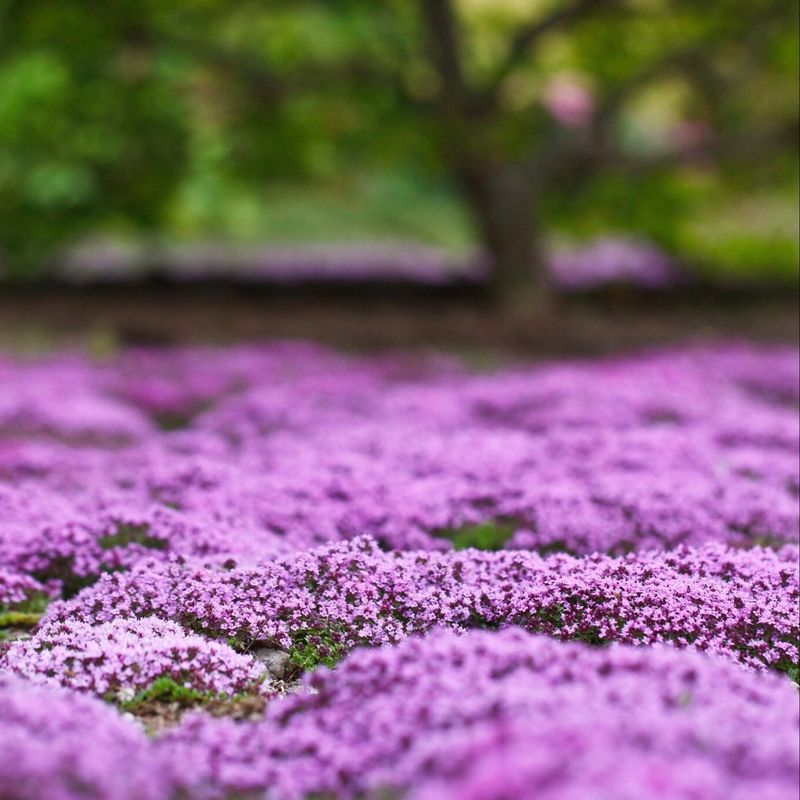
Ground-hugging creeping thyme creates living carpets around boxwood bases, softening their sometimes harsh edges. Tiny purple flowers cover these aromatic plants in summer, attracting beneficial pollinators while providing beautiful contrast to boxwood’s solid form.
Foot traffic releases thyme’s delightful fragrance along garden paths. Drought-tolerant once established, this herb requires minimal care while suppressing weeds around boxwood plantings. Choose woolly thyme for silvery foliage or lemon thyme for citrusy scent – both create magical partnerships with traditional boxwoods.
11. Japanese Maples
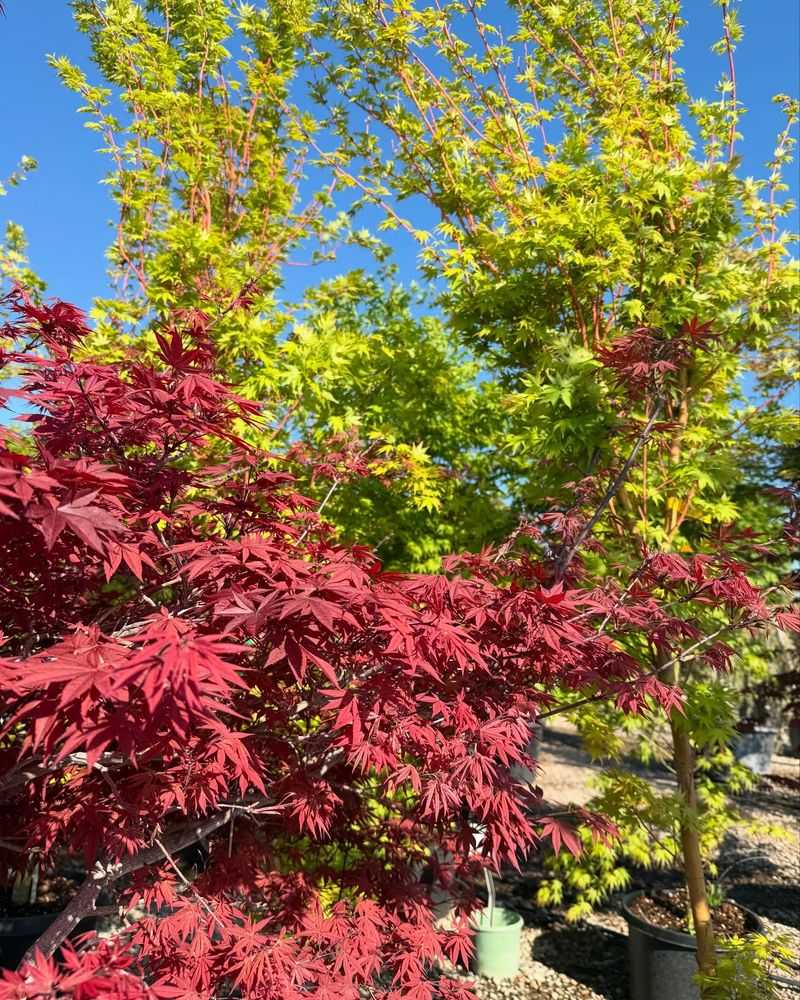
Elevated garden design happens when Japanese maples and boxwoods collaborate in the landscape. The maple’s delicate, often colorful foliage creates a beautiful counterpoint to boxwood’s dense, evergreen presence. Weeping varieties add graceful movement while upright forms provide vertical interest.
Red or purple-leaved cultivars create stunning contrast against green boxwoods. Both plants appreciate similar partially shaded conditions in many climates. For small spaces, dwarf Japanese maple varieties can be grown in containers alongside boxwood planters for a moveable garden vignette.
12. Catmint
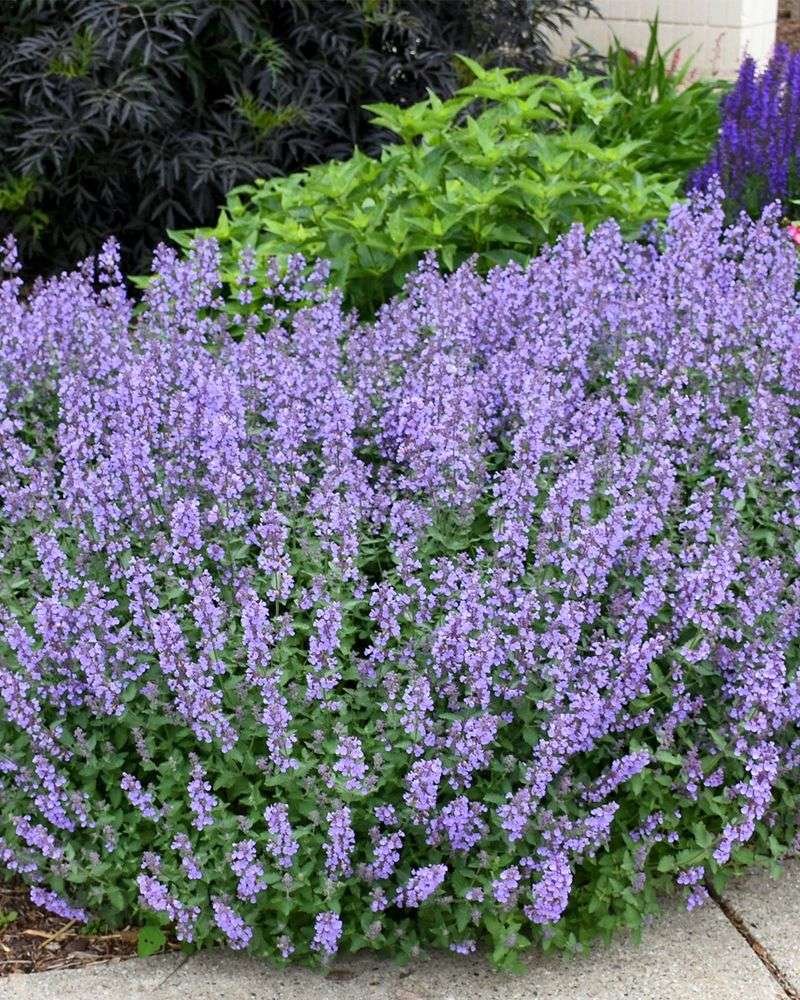
Soft waves of lavender-blue flowers spill around boxwood edges when catmint joins the garden party. This perennial blooms for months with minimal care, creating a romantic softness that balances boxwood’s formality perfectly.
Nepeta varieties offer drought tolerance and deer resistance alongside boxwoods. The gray-green foliage provides subtle contrast even when not in bloom. After the first flush of flowers, trim plants back by half for a repeat performance later in summer – extending the show while boxwoods maintain their steady presence.

